= Mammillaria longimamma f. variegata hort.
Accepted Scientific Name: Mammillaria longimamma DC.
Mém. Mus. Hist. Nat. 17: 113. 1828
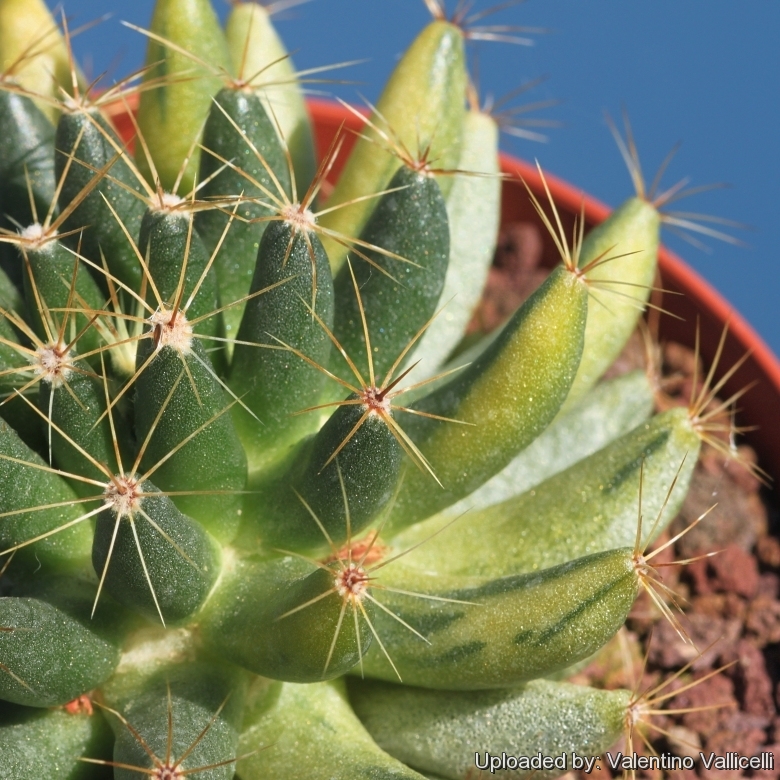
Cactus longimamma f. variegata (Mammillaria longimamma f. variegata) Photo by: Valentino Vallicelli
Origin and Habitat: Garden origin (Nursery produced cultivars).
Synonyms:
See all synonyms of Mammillaria longimamma
back
Accepted name in llifle Database:Mammillaria longimamma DC.Mém. Mus. Hist. Nat. 17: 113. 1828Synonymy: 24
back
Description: At first solitary, but clustering very young and forming dense clusters to 15 cm or more broad. With 10-30(-50) braches. The variegata (variegated form) has tubercles stripped in pale yellow and green.
Stem: Spherical, green, 3-6(12 cm) cm in diameter, up to 10 tall. Without latex.
Tubercles: Very long soft and flaccid 12-25 ? 5-8 mm. the axil is sparsely wooly, without bristles.
Radial spines: About 8 to 10 for 12 to 20 mm long white-yellowish or brown.
Central spines: Usually 1 central spine, to 25 mm long, not hooked or curved, similar to radial spines. No Central spine for the var. uberiformis.
Flowers: Very large for this genus, 4-6 cm long, 4.5-6 cm wide with bright yellow petals in May-July; stigmas yellow.
Fruits: Yellowish to green.
Roots: Thick taproots, large in upper portion.
More...Subspecies, varieties, forms and cultivars of plants belonging to the Mammillaria longimamma group
Notes: Variegated Mammillaria can be found (although not commonly) in cultivation, and some of these variegated plants have a place in any collection. All variegates are mutants. Something has gone wrong with the cellular structure of the growth tip (apical meristem) of the plant. As a result of this mutation, chlorophyll is missing from some or all layers of the plant epidermis. The odd variegate appears in many seedling batches in a small percentage, and is generally separated from normal plants. Variegated plants grow more slowly, and are generally smaller than non-variegates of the same species. Coloured areas are also generally weaker, and more susceptible to fungus, sunburn and other defects.
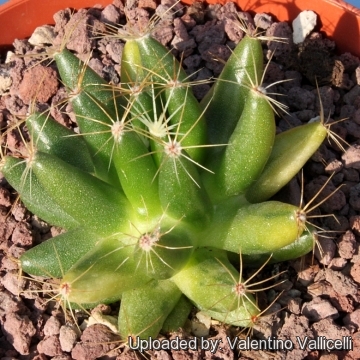 Cactus longimamma f. variegata (Mammillaria longimamma f. variegata) Photo by: Valentino Vallicelli
Cactus longimamma f. variegata (Mammillaria longimamma f. variegata) Photo by: Valentino Vallicelli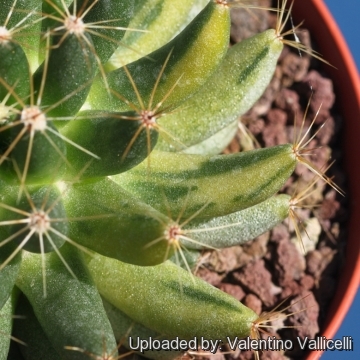 Cactus longimamma f. variegata (Mammillaria longimamma f. variegata) Photo by: Valentino Vallicelli
Cactus longimamma f. variegata (Mammillaria longimamma f. variegata) Photo by: Valentino Vallicelli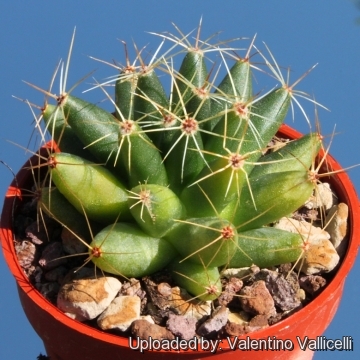 Cactus longimamma f. variegata (Mammillaria longimamma f. variegata) Photo by: Valentino Vallicelli
Cactus longimamma f. variegata (Mammillaria longimamma f. variegata) Photo by: Valentino Vallicelli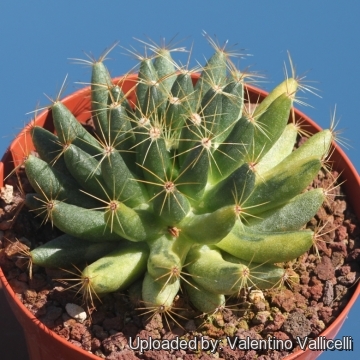 Cactus longimamma f. variegata (Mammillaria longimamma f. variegata) Photo by: Valentino Vallicelli
Cactus longimamma f. variegata (Mammillaria longimamma f. variegata) Photo by: Valentino Vallicelli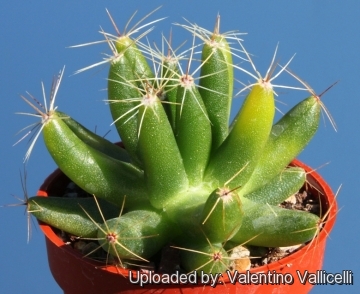 Cactus longimamma f. variegata (Mammillaria longimamma f. variegata) Photo by: Valentino Vallicelli
Cactus longimamma f. variegata (Mammillaria longimamma f. variegata) Photo by: Valentino VallicelliSend a photo of this plant.The gallery now contains thousands of pictures, however it is possible to do even more. We are, of course, seeking photos of species not yet shown in the gallery but not only that, we are also looking for better pictures than those already present.
Read More... Cultivation and Propagation: An easy species that will form large clumps with age. Mammillaria longimammaSN|11261]]SN|11261]] has a fairly large tap root, and should be kept in a deep pot with a very draining mineral substrate. Watering during the active growing season (spring and summer); this will encourage steady growth, and prevent the large tubercles from becoming flabby. But be careful with watering, which all thick rooted species require (rot sensitive). Keep dry during the winter rest, when the plant may pull near the surface of the potting mix. Fertilize every 2 weeks with diluted high potassium fertilizer when the plant is in bud. Need light shade to shade.
Propagation: Offsets, tubercles (Tubercles can be removed from the plant, let to dry a day or 2, and planted)















